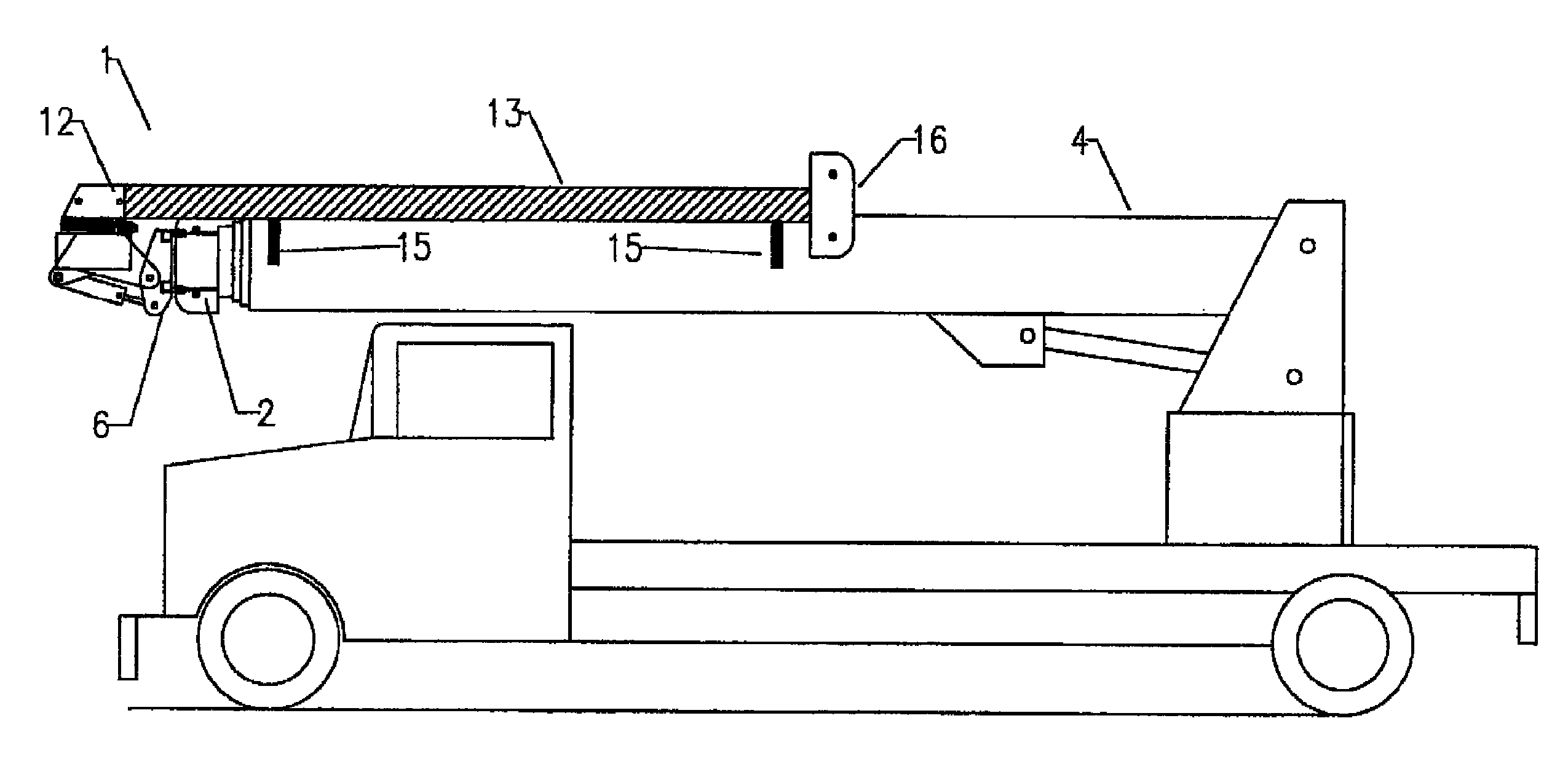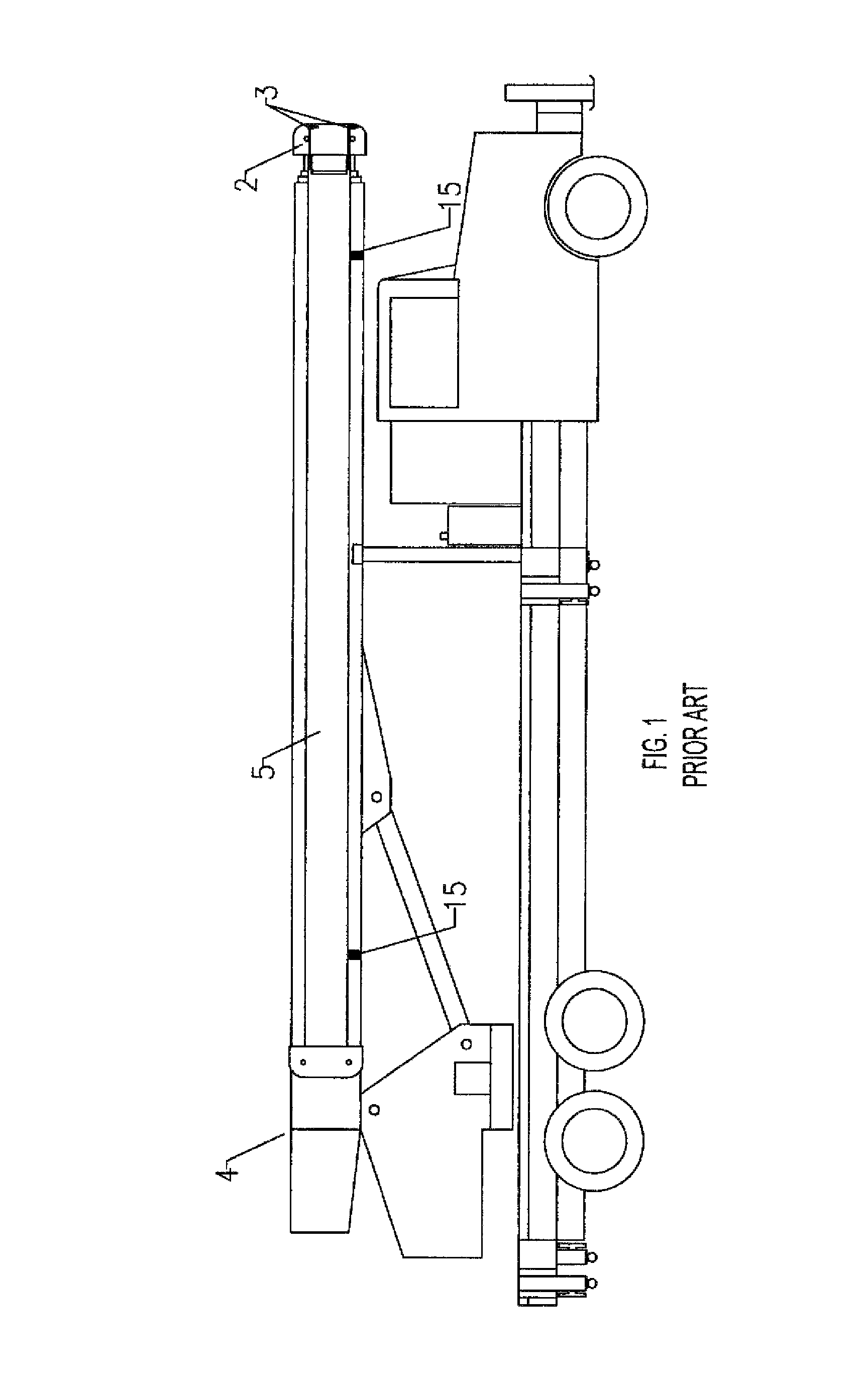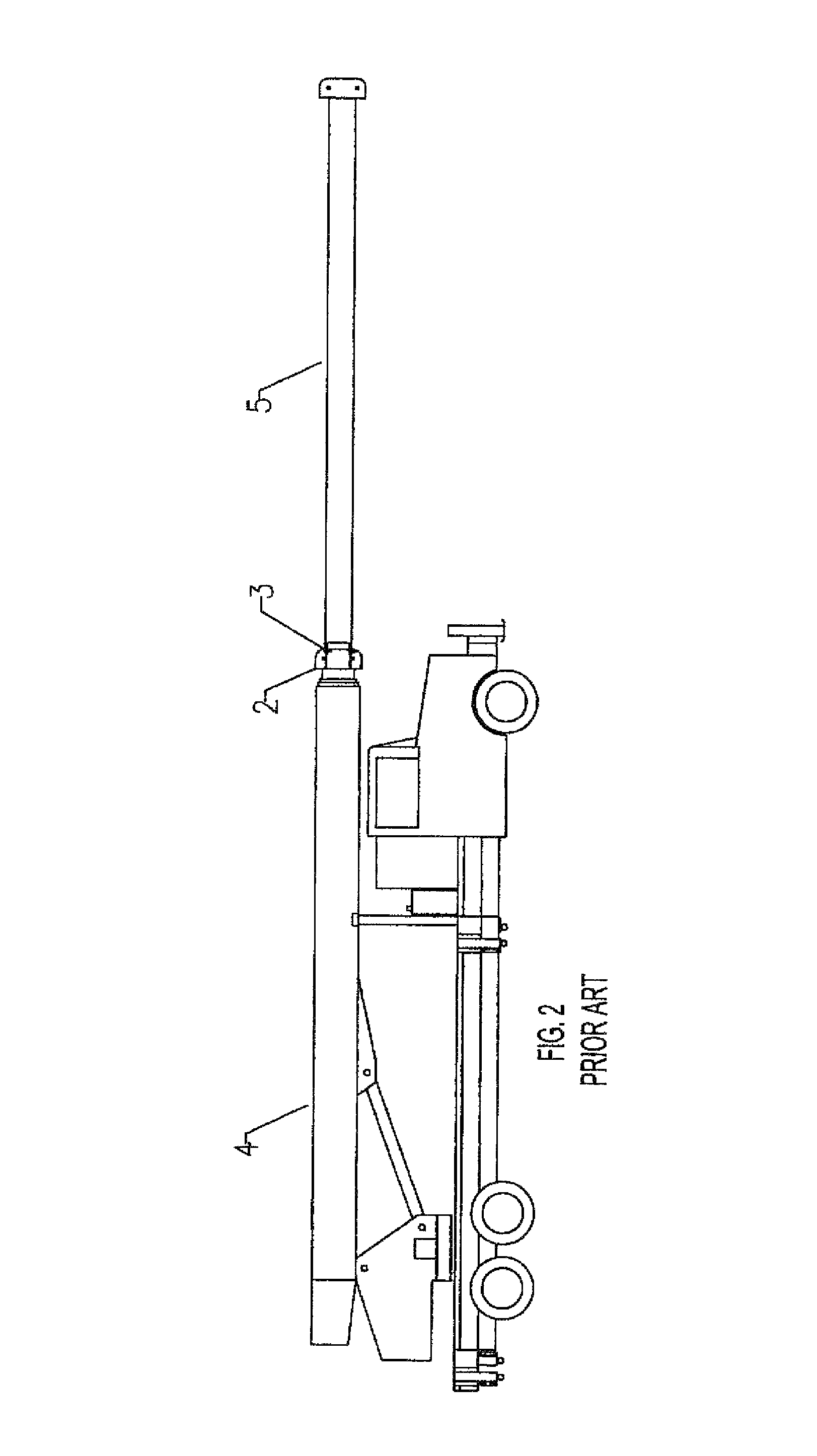Self-contained powered jib boom and optional work platform attachment for mobile cranes
a self-contained, crane-powered technology, applied in the field of jib booms, can solve the problems of not being easily adapted for other use, requiring a lot of labor to attach and detach the jib boom, and the aerial lift articulating boom is not self-contained, so as to achieve safe rotation, easy adjusting, and strong materials
- Summary
- Abstract
- Description
- Claims
- Application Information
AI Technical Summary
Benefits of technology
Problems solved by technology
Method used
Image
Examples
Embodiment Construction
[0043]The description herein provides preferred embodiments of the present invention but should not be construed as limiting its scope. Instead, the scope of the present invention should be determined by the appended claims and their legal equivalents, rather than being limited to the examples given.
[0044]This invention provides a universal and ready-to-use self-contained jib boom attachment 1 (including at a minimum jib boom tube 13, jib boom support structure 12, jib boom mounting bracket 6, and optional work platform 14) that is primarily intended for use with mobile and boom truck cranes, such as but not limited to those shown in FIGS. 1 and 19, which enables use of jib boom tube 13 as an articulating and rotating extension of the crane's main boom 4 for easy movement of jib boom tube 13 and optional work platform 14 around objects and obstacles confronted in aerial work sites, to provide better access of onboard personnel to many parts of the elevated work site without having t...
PUM
 Login to View More
Login to View More Abstract
Description
Claims
Application Information
 Login to View More
Login to View More - R&D
- Intellectual Property
- Life Sciences
- Materials
- Tech Scout
- Unparalleled Data Quality
- Higher Quality Content
- 60% Fewer Hallucinations
Browse by: Latest US Patents, China's latest patents, Technical Efficacy Thesaurus, Application Domain, Technology Topic, Popular Technical Reports.
© 2025 PatSnap. All rights reserved.Legal|Privacy policy|Modern Slavery Act Transparency Statement|Sitemap|About US| Contact US: help@patsnap.com



